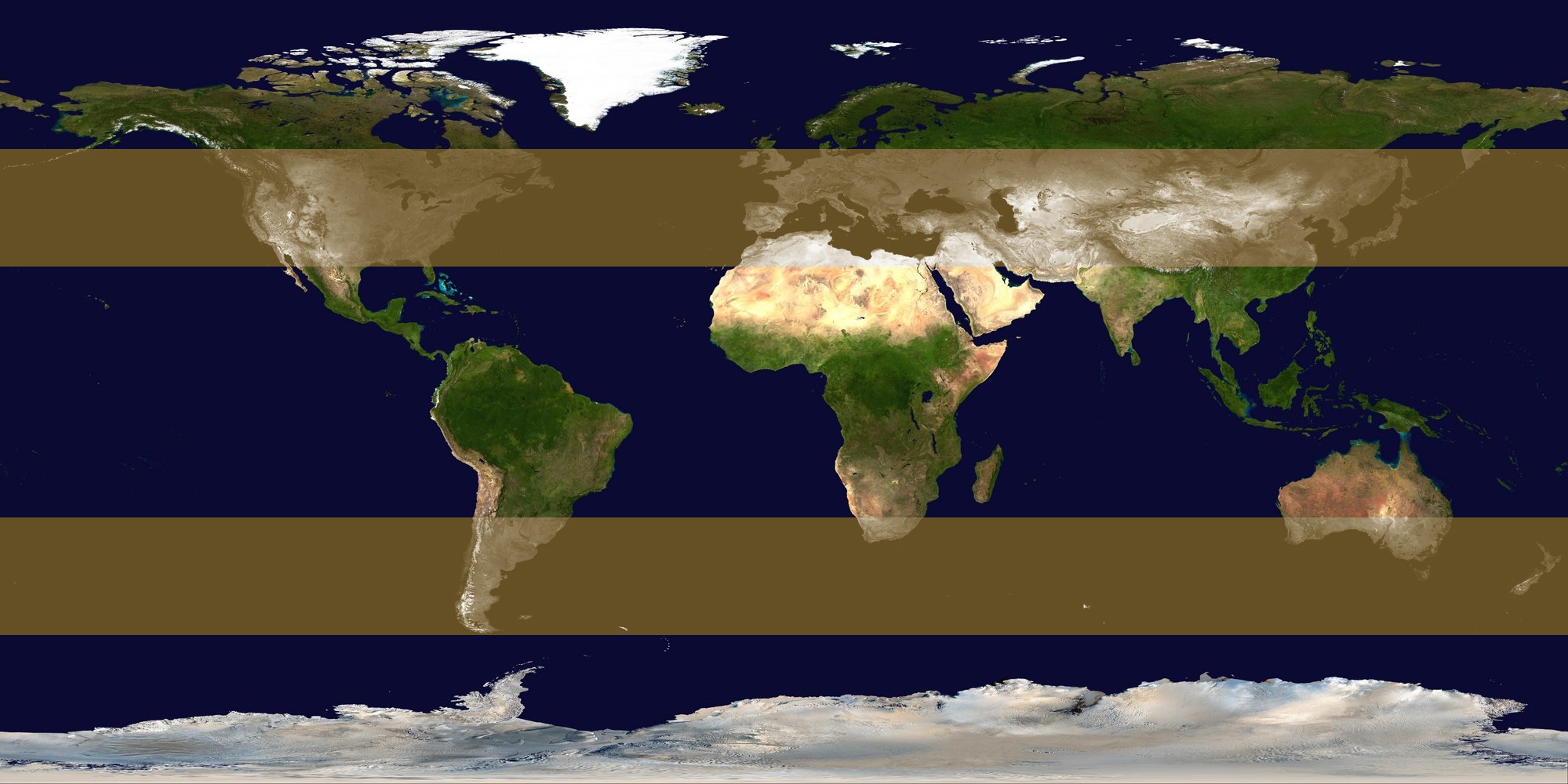Middle latitudes on:
[Wikipedia]
[Google]
[Amazon]

 The middle latitudes (also called the mid-latitudes, sometimes midlatitudes, or moderate latitudes) are a spatial region on
The middle latitudes (also called the mid-latitudes, sometimes midlatitudes, or moderate latitudes) are a spatial region on
 The middle latitudes (also called the mid-latitudes, sometimes midlatitudes, or moderate latitudes) are a spatial region on
The middle latitudes (also called the mid-latitudes, sometimes midlatitudes, or moderate latitudes) are a spatial region on Earth
Earth is the third planet from the Sun and the only astronomical object known to harbor life. While large volumes of water can be found throughout the Solar System, only Earth sustains liquid surface water. About 71% of Earth's surfa ...
located between the Tropic of Cancer ( latitudes 23°26'22") to the Arctic Circle (66°33'39"), and Tropic of Capricorn (-23°26'22") to the Antarctic Circle (-66°33'39"). They include Earth's subtropical and temperate zones, which lie between the two tropics and the polar circle
A polar circle is a geographic term for a conditional circular line (arc) referring either to the Arctic Circle or the Antarctic Circle. These are two of the keynote circles of latitude (parallels). On Earth, the Arctic Circle is currently d ...
s. Weather front
A weather front is a boundary separating air masses for which several characteristics differ, such as air density, wind, temperature, and humidity. Disturbed and unstable weather due to these differences often arises along the boundary. For in ...
s and extratropical cyclones are usually found in this area, as well as occasional tropical cyclones
A tropical cyclone is a rapidly rotating storm system characterized by a low-pressure center, a closed low-level atmospheric circulation, strong winds, and a spiral arrangement of thunderstorms that produce heavy rain and squalls. Dependi ...
or subtropical cyclones
The subtropical zones or subtropics are geographical and climate zones to the north and south of the tropics. Geographically part of the temperate zones of both hemispheres, they cover the middle latitudes from to approximately 35° north and ...
, which have traveled from their areas of formation closer to the Equator.
The prevailing winds in the middle latitudes are often very strong. These parts of the world also see a wide variety of fast-changing weather as cold air mass
In meteorology, an air mass is a volume of air defined by its temperature and humidity. Air masses cover many hundreds or thousands of square miles, and adapt to the characteristics of the surface below them. They are classified according to l ...
es from the poles and warm air masses from the tropics constantly push up and down over them against each other, sometimes alternating within hours of each other, especially in the roaring forties
The Roaring Forties are strong westerly winds found in the Southern Hemisphere, generally between the latitudes of 40°S and 50°S. The strong west-to-east air currents are caused by the combination of air being displaced from the Equator ...
(latitudes between 40° and 50° in both hemispheres).
There are five types of mid-latitude climates: mediterranean
The Mediterranean Sea is a sea connected to the Atlantic Ocean, surrounded by the Mediterranean Basin and almost completely enclosed by land: on the north by Western Europe, Western and Southern Europe and Anatolia, on the south by North Africa ...
, humid subtropical
A humid subtropical climate is a zone of climate characterized by hot and humid summers, and cool to mild winters. These climates normally lie on the southeast side of all continents (except Antarctica), generally between latitudes 25° and 40° ...
, marine west coast
An oceanic climate, also known as a marine climate, is the humid temperate climate sub-type in Köppen classification ''Cfb'', typical of west coasts in higher middle latitudes of continents, generally featuring cool summers and mild winters ...
, humid continental
A humid continental climate is a climatic region defined by Russo-German climatologist Wladimir Köppen in 1900, typified by four distinct seasons and large seasonal temperature differences, with warm to hot (and often humid) summers and freez ...
and subarctic.
See also
* Temperate climate *Geographical zone
The five main latitude regions of Earth's surface comprise geographical zones, divided by the major circles of latitude. The differences between them relate to climate. They are as follows:
# The North Frigid Zone, between the North Pole at 90 ...
* Polar circle
A polar circle is a geographic term for a conditional circular line (arc) referring either to the Arctic Circle or the Antarctic Circle. These are two of the keynote circles of latitude (parallels). On Earth, the Arctic Circle is currently d ...
* Subarctic climate
* Subtropics
* Tropics
References
{{Geographical coordinates Circles of latitude